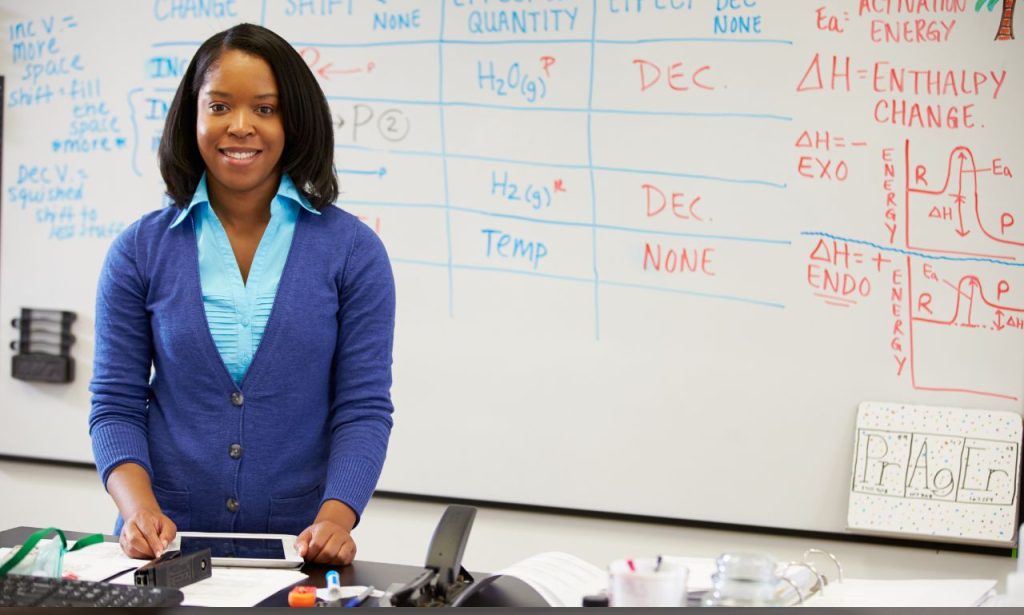You walk into a classroom buzzing with anticipation. The air crackles with a blend of excitement and apprehension. A sea of curious eyes follows your every move. This is it. You’re the substitute teacher, entrusted with the crucial task of guiding these young minds for the day. It’s a role that demands adaptability, resilience, and a genuine passion for education. What makes a great substitute teacher goes beyond simply filling in; it’s about creating a positive and productive learning environment, even in the face of the unexpected.
Key Qualities of an Effective Substitute Teacher
While every classroom is unique, certain qualities are universally valued in the realm of substitute teaching. These qualities are the bedrock upon which you can build a successful and rewarding experience for yourself and the students you teach.
1. Adaptability

Imagine this: you meticulously prepare a lesson plan based on the notes provided, only to discover upon arrival that the class is at a completely different point in the curriculum. A substitute teacher’s life is full of such curveballs. What makes a great substitute teacher is the ability to adapt on the fly, adjusting lesson plans, classroom management strategies, and even your own teaching style to suit the unique dynamics of each classroom.
- Embrace Flexibility: View unexpected situations not as obstacles, but as opportunities to exercise your creative problem-solving skills.
- Be a Keen Observer: Quickly assess the classroom environment, student dynamics, and available resources to tailor your approach accordingly.
- Have a Backup Plan (or Two): Always have a few versatile activities and teaching strategies in your back pocket to navigate unexpected turns.
2. Strong Classroom Management Skills
Stepping into a classroom as a new face, you’ll encounter a diverse range of personalities and learning styles. Effective classroom management is less about enforcing strict rules and more about fostering a respectful and productive learning environment where every student feels safe and supported.
- Establish Clear Expectations: From the moment you step into the classroom, communicate your expectations for behavior in a clear, concise, and age-appropriate manner.
- Consistency is Key: Enforce established rules and procedures fairly and consistently to create a sense of predictability and security for students.
- Positive Reinforcement: Acknowledge and reward positive behavior to motivate students and create a positive classroom culture.
3. Effective Communication and Interpersonal Skills
Communication is the cornerstone of effective teaching, and this is especially true for substitute teachers who are often stepping into established classroom dynamics. What makes a great substitute teacher is the ability to communicate effectively with students, fellow teachers, and school staff, fostering a collaborative and supportive learning environment.
- Active Listening: Pay close attention to what students are saying, both verbally and nonverbally, to understand their perspectives and address their needs.
- Clear and Concise Instructions: Use age-appropriate language and clear, step-by-step instructions to ensure that students understand expectations.
- Respectful Dialogue: Foster an environment where students feel comfortable asking questions, expressing their opinions, and engaging in respectful discussions.
4. Professionalism and Positive Attitude
Your demeanor sets the tone for the entire classroom. A positive attitude can be infectious, creating a more enjoyable and productive learning environment for everyone.
- Enthusiasm is Contagious: Approach each day with a positive attitude and genuine enthusiasm for teaching, even if you’re facing challenges.
- Professionalism Matters: Dress appropriately for the school environment, arrive on time, and maintain a professional demeanor in all interactions.
- Be Approachable and Patient: Create a welcoming atmosphere where students feel comfortable approaching you with questions or concerns.
5. Preparedness and Resourcefulness
While you can’t anticipate every situation, being prepared for the unexpected is crucial. What makes a great substitute teacher is the ability to think on their feet and utilize available resources effectively.
- The Substitute Teacher Toolkit: Carry a well-stocked bag with essential supplies like pens, pencils, paper, a whistle, a timer, and basic first-aid items.
- Familiarize Yourself with School Policies: Take the time to review school policies on attendance, discipline, emergency procedures, and technology use.
- Be a Resourceful Problem-Solver: Don’t be afraid to ask for help from fellow teachers, school staff, or online resources when needed.
Strategies for Success in the Classroom
Beyond possessing these essential qualities, there are practical strategies you can implement to create a positive and productive learning environment.
1. Building Rapport with Students
Building rapport with students, even in a short period, can make a world of difference.
- Learn Names: Make an effort to learn students’ names quickly. This simple act demonstrates respect and helps create a more personal connection.
- Show Genuine Interest: Engage students in conversations about their interests, hobbies, or weekend plans.
- Use Humor Appropriately: A little humor can go a long way in creating a more relaxed and enjoyable learning environment.
2. Active Supervision Techniques
Effective classroom management often hinges on proactive supervision.
- Move Around the Classroom: Avoid staying stationary at the front of the room. Circulate among students, providing individual support and monitoring progress.
- Maintain Eye Contact: Establish and maintain eye contact with students to convey attentiveness and discourage disruptive behavior.
- Use Proximity Control: Position yourself near students who may need additional support or redirection.
3. Creating Structured Routines
Students thrive on routine, especially in the absence of their regular teacher.
- Establish Clear Procedures: Clearly communicate expectations for routine activities like entering the classroom, transitioning between activities, and submitting assignments.
- Visual Aids: Use visual aids like charts, timers, or schedules to provide structure and support transitions.
- Consistency is Key: Consistently enforce established routines to create a sense of predictability and minimize disruptions.
4. Engaging Students with Quick Activities
Having a repertoire of engaging quick activities can be a lifesaver, especially when you have a few extra minutes before a transition or need to refocus the class.
- Brain Breaks: Incorporate short brain breaks into the day to help students re-energize and refocus.
- Educational Games: Engage students with educational games that reinforce concepts or skills related to the curriculum.
- Creative Writing Prompts: Spark creativity and imagination with quick writing prompts.
5. Handling Unforeseen Challenges
No matter how prepared you are, unforeseen challenges are bound to arise.
- Remain Calm and Collected: Maintain your composure in challenging situations. Your calm demeanor can help de-escalate tense situations.
- Follow School Procedures: Be familiar with school procedures for handling emergencies, behavioral issues, or other unforeseen circumstances.
- Don’t Be Afraid to Seek Help: Don’t hesitate to reach out to fellow teachers, administrators, or support staff for assistance when needed.
The Importance of Collaboration
While you may be the sole teacher in the classroom, effective substitute teaching thrives on collaboration.
1. Communicating with Regular Teachers
The regular classroom teacher is your most valuable resource.
- Review Lesson Plans: Carefully review lesson plans and any additional notes provided by the regular teacher.
- Ask Clarifying Questions: Don’t hesitate to reach out to the teacher with any questions or concerns you may have about the lesson plans or classroom procedures.
- Leave Detailed Notes: At the end of the day, leave a detailed note for the regular teacher outlining what was covered, any challenges encountered, and observations about student progress.
2. Involving Support Staff
School support staff, including paraprofessionals, counselors, and administrators, can provide invaluable assistance.
- Introduce Yourself: Take the time to introduce yourself to support staff and make them aware of your presence in the classroom.
- Communicate Needs: Clearly communicate any specific needs or support required for individual students or the class as a whole.
- Seek Guidance: Don’t hesitate to reach out to support staff for guidance on handling challenging situations or addressing student needs.
3. Engaging with Parents and Guardians

While your interactions with parents may be limited, fostering open communication is essential.
- Positive Communication: If possible, send a brief note home with students highlighting positive aspects of the day or student achievements.
- Address Concerns Professionally: If contacted by parents with concerns, listen attentively, respond professionally, and offer reassurance that you are committed to providing a positive learning environment for their child.
Conclusion
As you prepare to step into the classroom, remember that what makes a great substitute teacher extends far beyond simply covering the curriculum. It’s about embracing the unpredictable, fostering connections, and creating a positive and productive learning environment where every student feels valued and supported. Your dedication and commitment to this vital role can have a lasting impact, shaping young minds and leaving a legacy that extends far beyond a single day in the classroom.
ALSO READ: Best Side Hustles for Teachers
FAQs
Every school has established procedures for handling behavioral issues. Remain calm, address the behavior directly, and if necessary, follow the school’s disciplinary guidelines. Document the incident and inform the regular teacher.
It’s perfectly acceptable to have preferences. When accepting assignments, be upfront about your comfort level with different subjects and grade levels.
View each assignment as a learning opportunity. Observe different teaching styles, experiment with new strategies, and continuously seek ways to enhance your skills.




